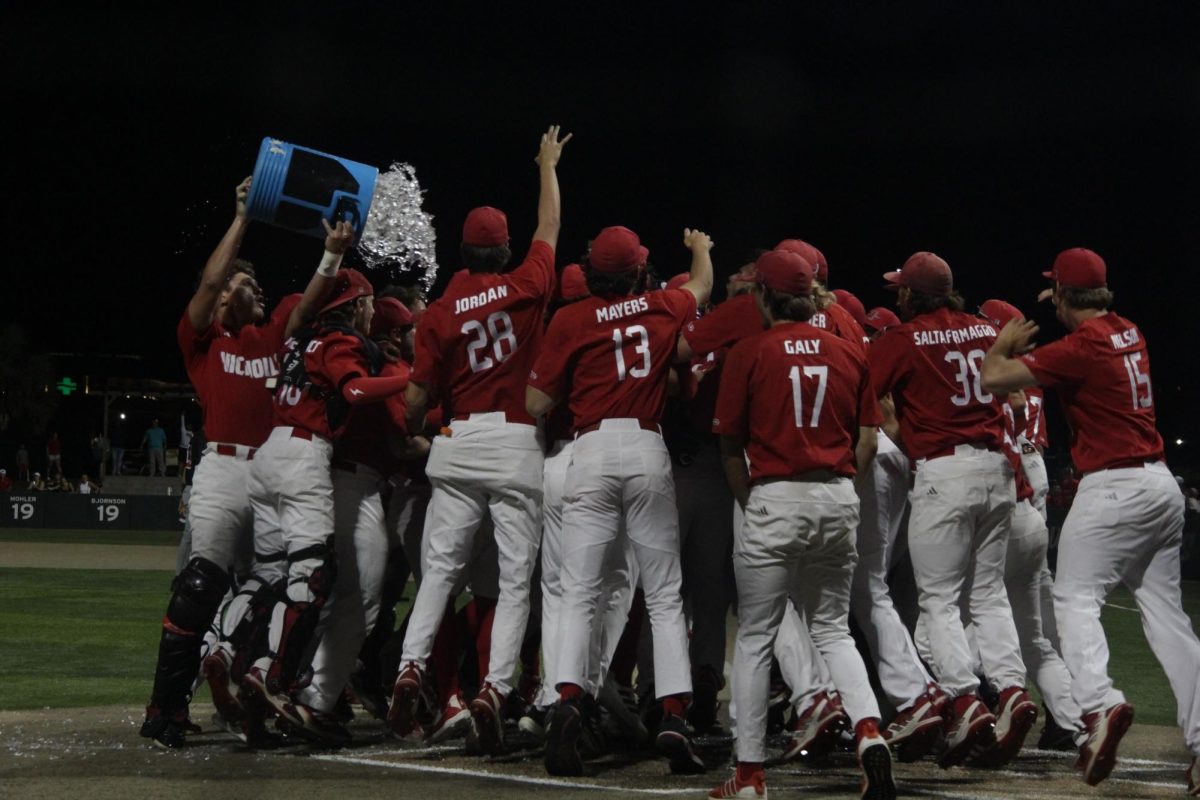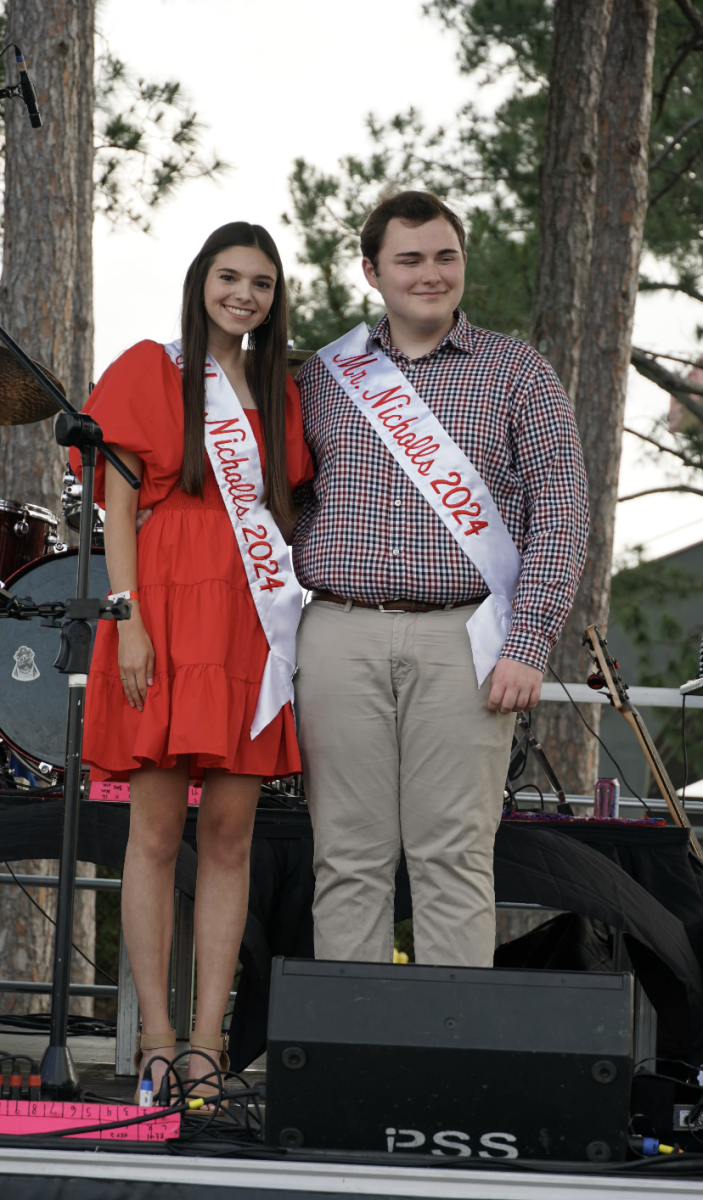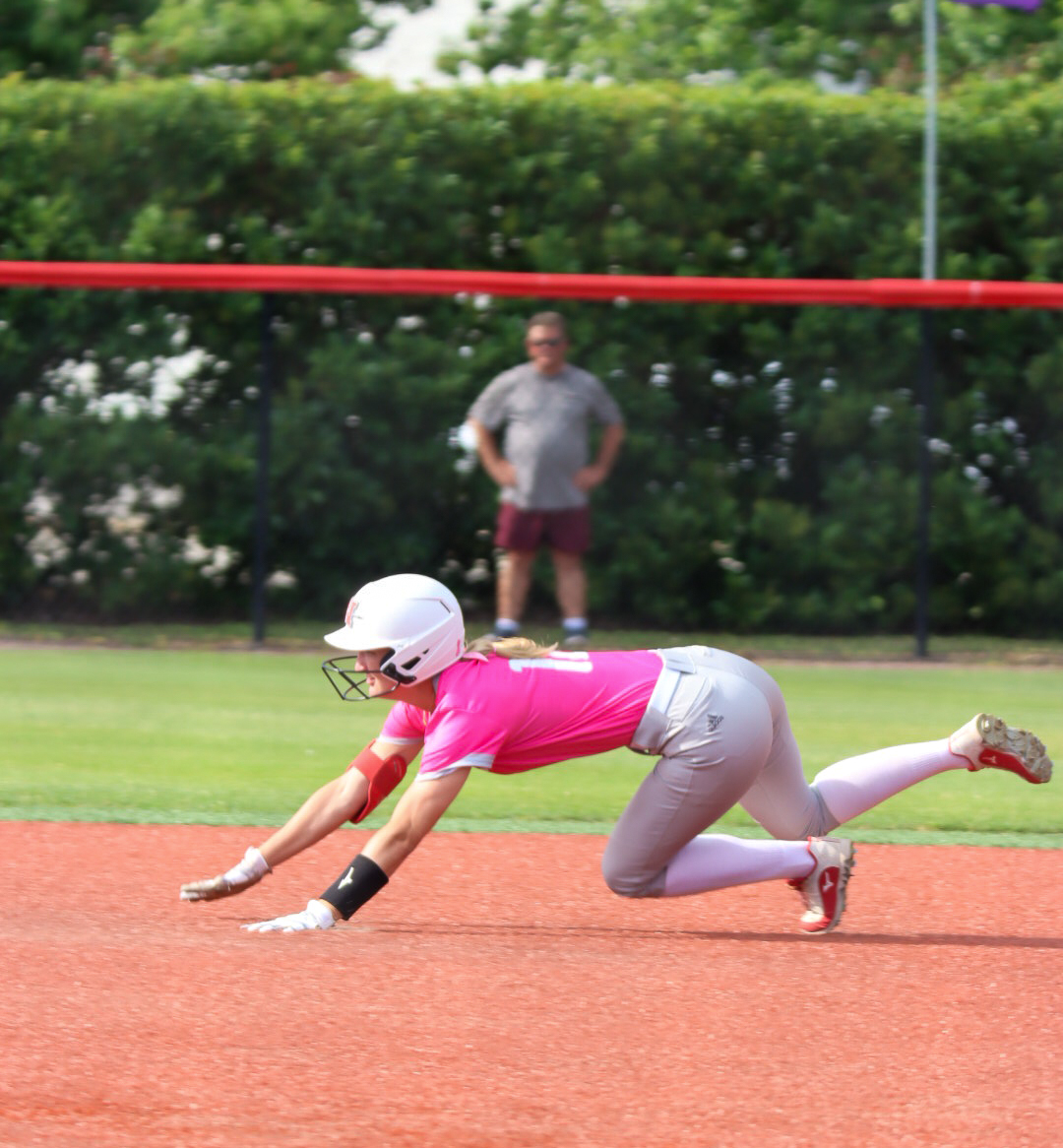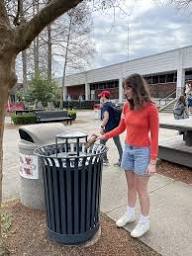According to the NCAA, graduation rates among black student athletes are up to 52 percent among first time freshmen since 1998, a 17 percent increase from 1984 when studies were first done after eligibility standards to enhance graduation rates were increased.Forty-eight percent of black male athletes entering colleges since 1998 have graduated, a 15 percent jump from the 33 percent rate of 1984. Black female athletes have a 63 percent graduation rate, 18 percent higher than when the first study was done.
White student-athletes also out-performed the numbers in 1984, but the increases were not as significant. White males showed improvement from 59 percent to 66 percent, while white females jumped from 66 percent to 73 percent.
At Nicholls, 40 percent of black student athletes who entered the University in 1998 have graduated. In football alone, out of seven black student-athletes, 28.6 percent graduated. In cross country and track, 66.7 percent of black athletes graduated.
Nicole Smith, athletic academic adviser, said that since she’s been here, the number of students that have finished is encouraging, and the numbers have the potential to grow in the future.
“Of course there’s basketball, baseball and football out there, but after that ends what do you have left?” she asked. “Universities have done a better job of making degrees relevant to athletes.”
NCAA statistics also show that black student-athletes have higher graduation rates than the general student population demographic. In football and men’s and women’s basketball alone, the national average of graduating black student-athletes is 52 percent, compared to the black student body with 43 percent.
Overall black male athletes are graduating at a rate of 48 percent instead of the 36 percent rate of the black male student body, and female black athletes have distanced themselves from the female black student body 47 percent to 63.
At Nicholls, the 1998 graduation rate of blacks enrolled in the university was 8.9 percent, compared with the 40 percent graduation rate of black student-athletes from the same time period.
Along with having the student-athletes attend tutoring, Smith oversees other programs that aid in the progression of both black and white athletes in the University. “One of things that I do personally is progress reports where the athletes fill out where they think they are, then the faculty fills out where the student actually is. I sit down with the athlete and if there is a difference, finding a way to get the student on track,” Smith said.
University College, the tutoring center and other University services have also been involved to aid the student-athletes. “Since we don’t have the funding to have our own academic learning center, we try to use the University resources as much as possible, and Nicholls has been very helpful in that,” Smith said.
More attention has been paid to the graduation rate of black athletes since 1984 when the NCAA passed Proposition 48 that set core-course grade-point average requirements and a minimum standardized test score for eligibility. At the time it was believed that it would have an effect on economically disadvantaged minorities who may not be able to meet the requirements.
The first group that was subjected to the standards was the class of 1986, which did well although the number of black student-athletes decreased. Then in 1992, Division I passed Proposition 16 that increased the number of high school core course requirements from 11 to 13 and added a sliding scale for GPA and test scores.
By the time the proposition took effect in 1995, students were already exceeding the numbers, and the belief that access was limited lessened.
In 2003, the NCAA did away with the cut score and started debates that schools were focusing less on academic success and more on athletic success. Seventy-two percent of blacks that were once excluded under the old rules were shown to be performing better than those who had been placed in because of past requirements.
In order to recruit players today, coaches not only look for athletic potential but also have to take into account a player’s attitude toward academics. “You can look at a kid’s test scores and weed out the ones who don’t want to get an education, and don’t make those people a priority,” women’s basketball head coach Mark Cook said. “I think our upperclassmen have a good grasp on what they have to do; you can’t neglect one for the other and be successful.”
Head coach J.P. Piper of the Colonels basketball team said he sees a lot of student-athletes who only focus on basketball and believe they can slide by on athletics alone. “What we’ve seen is that some of the students may not have taken school seriously in the ninth and tenth grades, getting the necessary tools in order to function,” Piper said. “Then some of the kids will be alerted by a high school or AAU coach about college life; then you see a change, and we feel like that shows an increase in awareness of how being a college athlete works.”
One player that Piper uses as an example is senior guard Cyril Djoukeng, who has maintained a 4.0 grade-point average throughout his college career. “When I look at a guy like Cyril, I think about my own experiences. Where in a class I may have gotten a B or C, he gets an A,” Piper said. “Then that translates to the court, where he will do the things that may be considered boring, such as lateral movements and defense, then excel at that as well.”
Smith said that coaches at Nicholls have a hands-on approach to dealing with below-average grades, although they can elect to have the administration handle most of the academic duties when a player decides to slack off.
“Our coaches have definitely jumped on board with dealing out consequences for student-athletes that sign up for something and then don’t meet the requirements,” she said. “We get reports from the tutors, and after we get that information, send it to the coaches that diagnose the problem and get it fixed quickly.”
Programs that could be on the horizon for the student-athletes are guest speakers, at-risk management assessments and a program that would work on skills that players may not have acquired in high school. “We have University 101, and that helps with the transition, but I would like to find something that would help with other things that go along with being in college,” Smith said.
With the Academic Progress Rate affecting scholarships for university athletic programs across the nation, poor academic records will not only affect players, but also the teams they play for.
“I think our coaches are doing a better job of getting student-athletes, not just athletes,” Smith said. “As we’ve seen recently, coaches won’t risk losing players for the sake of one, and that’s a step in the right direction academically and athletically.


![Assistant coach Cody Livingston [#53] talking with pitcher Nico Saltaformaggio [#38] on the mound(5/12).](https://thenichollsworth.com/wp-content/uploads/2024/05/LivingstonNicoHuddle-vs-Lamar-1200x800.jpg)




